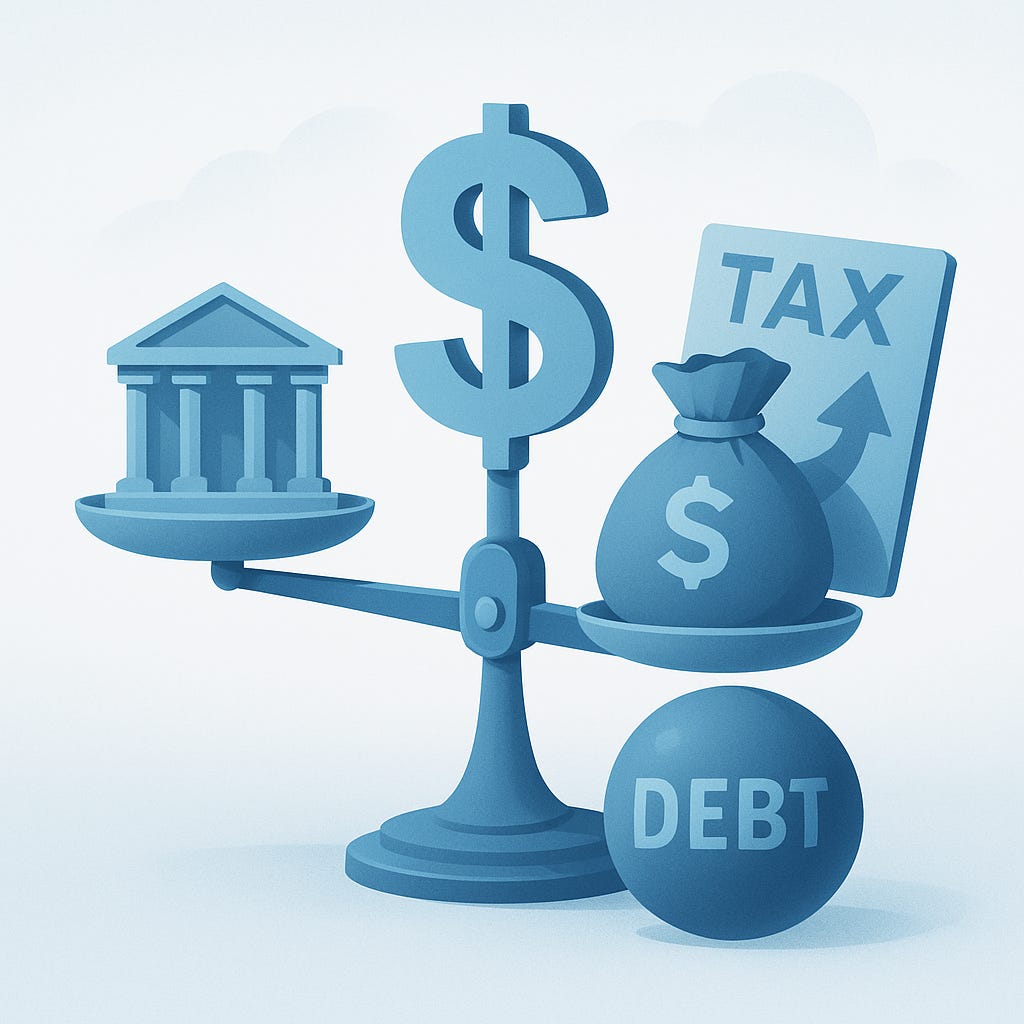What Kind of Government Are You Actually Willing to Fund? The Results Are In
Results from our survey on preferences for government size and tax tolerance
Last week, we posed a provocative question: How much government are you really willing to pay for?
Our goal wasn’t just to spark debate. We wanted to provide a simple tool to reveal whether your preferences for government spending and taxation align. The results are now in, and they say something important about the disconnect at the heart of American fiscal politics.
Let’s dive into what you told us.
The Tax Side: Less, Please
On the question of taxes, your responses were crystal clear: most of you don’t want to raise revenue. In fact, 82% of respondents said they prefer to maintain or cut federal revenues from FY2024 levels of 17.1% of GDP. The most popular tax choice? Reducing revenues to just 15.4% of GDP—a level not seen since the Great Financial Crisis and a strong preference for a leaner federal tax burden.
This isn’t all that surprising. Americans have long been skeptical of taxes, and many are instinctively drawn to the idea of doing more with less. But the real tension emerges when we compare this preference with what you said about spending.
The Spending Side: Also Less, But Not Too Much Less
Americans love tax cuts, but they’re also famously attached to government programs. That’s why it’s noteworthy that 87% of you also supported cutting spending, including for entitlements like Social Security, Medicare, and Medicaid. That’s a major shift from what policymakers are willing to do.
Still, the most common response was to reduce spending by 10% from today’s level, which would bring it down from about 23.5% to 21.1% of GDP.
That’s a meaningful cut, but it still leaves us with a substantial gap when matched against your tax preferences.
The Gap: Wanting 21.1%, Willing to Fund 15.4%
When we compare the most popular tax choice (15.4% of GDP) with the most popular spending preference (21.1% of GDP), we get a clear answer to the central question:
You’re willing to fund a government of about 15–16% of GDP, but you still want it to spend about 18–21%. In short, there’s a fiscal mismatch embedded in these preferences.
Sound familiar? It should. The current federal deficit hovers around 5.6% of GDP and has averaged about 6% in recent years. What this suggests is that the fiscal imbalance is not merely a policy failure, it reflects a deeper disconnect in voter preferences.
The Fiscal Illusion in Action
This survey provides real-world evidence of the “fiscal illusion” James Buchanan warned about: when the costs of government are hidden or deferred (via borrowing), voters can demand more services without feeling the pinch of paying for them.
Politicians from both parties have capitalized on this illusion. Republicans promise tax cuts without spending cuts. Democrats promise expanded entitlements funded solely by taxing “the rich.” And both sides contribute to the long-term structural deficit by avoiding hard conversations with voters.
But when borrowing becomes expensive, as it has in today’s high-interest-rate environment, the illusion begins to crack.
The Point: Honesty About Tradeoffs
This exercise wasn’t meant to produce a “right” answer, but to provoke honest reflection about tradeoffs. It showed that most of you favor a significantly smaller federal government, one that taxes and spends closer to the historical average of the 1950s or 1990s, not the post-COVID expansion.
But it also revealed a reality many Americans still struggle with: we can’t get Scandinavian benefits with Reagan-era taxes.
If we want a leaner state, we need to reduce spending on actual programs, not just gesture at “waste.” If we want a generous welfare state, we need to broaden the tax base so that we’re actually capable of funding it. This doesn’t need to be done through tax rate increases—our tax code contains at least 170 deductions, exemptions, credits, and subsidies that cost some $26 trillion in forgone revenues over the decade. Maybe we can start there.
Final Thought: The Bill Is Coming Due
Whether we acknowledge it or not, fiscal reality always asserts itself. Borrowing may feel painless today, but it becomes expensive tomorrow. And as the debt rises, so too will the economic, political, and moral costs of pretending that we can have it all without paying for it.
Thanks again to everyone who took the survey.




